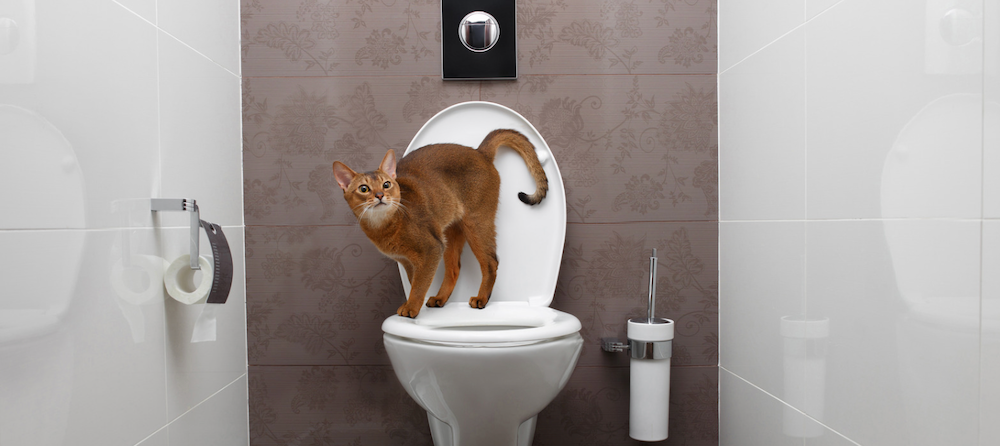Reasons You Must Never Flush Cat Poop Down Your Toilet - Critical Facts
Reasons You Must Never Flush Cat Poop Down Your Toilet - Critical Facts
Blog Article
Just how do you feel about How to Dispose of Cat Poop and Litter Without Plastic Bags?

Intro
As pet cat proprietors, it's vital to bear in mind just how we take care of our feline friends' waste. While it may appear convenient to purge cat poop down the bathroom, this method can have harmful repercussions for both the atmosphere and human wellness.
Alternatives to Flushing
The good news is, there are more secure and extra accountable ways to deal with feline poop. Take into consideration the adhering to options:
1. Scoop and Dispose in Trash
One of the most common approach of throwing away feline poop is to scoop it into an eco-friendly bag and toss it in the garbage. Be sure to utilize a devoted litter scoop and take care of the waste without delay.
2. Use Biodegradable Litter
Choose eco-friendly cat litter made from materials such as corn or wheat. These clutters are eco-friendly and can be safely taken care of in the trash.
3. Bury in the Yard
If you have a yard, consider burying pet cat waste in a designated location far from veggie gardens and water sources. Make sure to dig deep adequate to prevent contamination of groundwater.
4. Install a Pet Waste Disposal System
Purchase an animal garbage disposal system specifically made for feline waste. These systems use enzymes to break down the waste, minimizing odor and ecological impact.
Health and wellness Risks
In addition to ecological concerns, purging feline waste can also pose health and wellness risks to human beings. Pet cat feces might contain Toxoplasma gondii, a parasite that can trigger toxoplasmosis-- a potentially extreme disease, particularly for expecting females and people with weakened body immune systems.
Ecological Impact
Purging feline poop introduces damaging microorganisms and bloodsuckers right into the water supply, posturing a considerable threat to aquatic ecological communities. These pollutants can adversely influence aquatic life and concession water top quality.
Conclusion
Liable family pet possession prolongs beyond offering food and sanctuary-- it also involves appropriate waste management. By avoiding purging cat poop down the commode and selecting alternate disposal approaches, we can decrease our environmental footprint and protect human health and wellness.
Why Can’t I Flush Cat Poop?
It Spreads a Parasite
Cats are frequently infected with a parasite called toxoplasma gondii. The parasite causes an infection called toxoplasmosis. It is usually harmless to cats. The parasite only uses cat poop as a host for its eggs. Otherwise, the cat’s immune system usually keeps the infection at low enough levels to maintain its own health. But it does not stop the develop of eggs. These eggs are tiny and surprisingly tough. They may survive for a year before they begin to grow. But that’s the problem.
Our wastewater system is not designed to deal with toxoplasmosis eggs. Instead, most eggs will flush from your toilet into sewers and wastewater management plants. After the sewage is treated for many other harmful things in it, it is typically released into local rivers, lakes, or oceans. Here, the toxoplasmosis eggs can find new hosts, including starfish, crabs, otters, and many other wildlife. For many, this is a significant risk to their health. Toxoplasmosis can also end up infecting water sources that are important for agriculture, which means our deer, pigs, and sheep can get infected too.
Is There Risk to Humans?
There can be a risk to human life from flushing cat poop down the toilet. If you do so, the parasites from your cat’s poop can end up in shellfish, game animals, or livestock. If this meat is then served raw or undercooked, the people who eat it can get sick.
In fact, according to the CDC, 40 million people in the United States are infected with toxoplasma gondii. They get it from exposure to infected seafood, or from some kind of cat poop contamination, like drinking from a stream that is contaminated or touching anything that has come into contact with cat poop. That includes just cleaning a cat litter box.
Most people who get infected with these parasites will not develop any symptoms. However, for pregnant women or for those with compromised immune systems, the parasite can cause severe health problems.
How to Handle Cat Poop
The best way to handle cat poop is actually to clean the box more often. The eggs that the parasite sheds will not become active until one to five days after the cat poops. That means that if you clean daily, you’re much less likely to come into direct contact with infectious eggs.
That said, always dispose of cat poop in the garbage and not down the toilet. Wash your hands before and after you clean the litter box, and bring the bag of poop right outside to your garbage bins.
https://trenchlesssolutionsusa.com/why-cant-i-flush-cat-poop/

Do you like more info about How to Dispose of Cat Poop and Litter Without Plastic Bags? Give a remark further down. We would be delighted to listen to your views about this page. We are looking forward that you come back again before long. Please take the opportunity to share this article if you liked it. Thank you for going through it.
Click Here Report this page